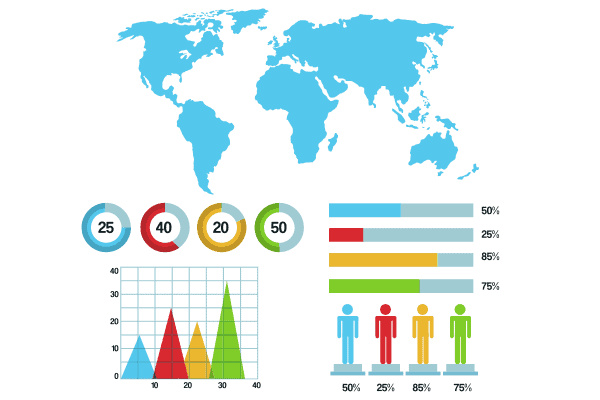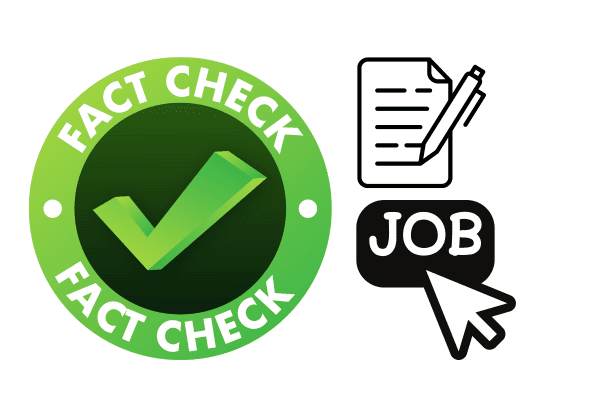Best Ways Creating Engaging Content for Social Media (2023)
Engage, Enlighten, Elevate A Step-by-Step Guide to Stellar Social Content.
You’re about to discover an innovative way to boost your social media presence with the help of “Creating Engaging Content for Social Media.”
This product offers a studio space designed for creating, shooting, and posting captivating content on various social media platforms. With its dedicated Content Creation Studio, you’ll have all the tools and resources you need to create compelling content that will captivate your audience and take your social media game to the next level.
Say goodbye to mediocrity and hello to a world of endless possibilities for your online presence.
Creating Engaging Content for Social Media
Social media has become integral to our daily lives in today’s digital age. Whether it’s Facebook, Instagram, Twitter, or YouTube, people constantly scroll through their social media feeds to stay connected with friends, family, and the world around them.
As a business or content creator, it’s essential to understand the power of social media and leverage it to your advantage. One of the key factors in achieving success on social media is creating engaging content.
In this article, we will delve into the strategies and techniques you can use to create content that captivates your audience and drives them to take action.
Understanding Social Media Platforms
Before diving deep into content creation, it’s crucial to have a solid understanding of the different social media platforms available. Each platform has its unique features, demographics, and user behavior.
Understanding these nuances allows you to tailor your content to each platform and maximize its impact.
Types of social media platforms
Social media platforms can be broadly classified into several categories. These include social networking sites like Facebook and LinkedIn, microblogging platforms like Twitter, image-sharing platforms like Instagram and Pinterest, video-sharing platforms like

YouTube and TikTok, and many more. Each platform type has its strengths and limitations, which should be considered when creating content.
Popular social media platforms
Certain social media platforms have gained immense popularity and become dominant industry players. With its massive user base, Facebook remains one of the most widely used platforms globally, while Instagram has established itself as the go-to platform for visual content.
On the other hand, Twitter focuses on short and concise updates, making it ideal for real-time information sharing. Understanding each platform’s popularity and unique features can help you choose the right ones for your content strategy.
Demographics and user behavior on social media
Each social media platform attracts a specific demographic, and users behave differently on each platform. For example, Facebook is popular among older demographics, while Instagram and Snapchat appeal more to younger audiences.

Understanding each platform’s demographics and user behavior allows you to tailor your content to resonate with your target audience.
Trends and algorithms
Social media trends and algorithms constantly evolve, shaping how users discover and consume content. Staying current with these trends and algorithms is crucial to ensure your content remains relevant and visible.
By adapting to the latest trends, you can capture the attention of your target audience and increase engagement.
Identifying Your Target Audience
Creating engaging content starts with identifying your target audience. Knowing who you are creating content for allows you to tailor your messaging, style, and format to meet their needs and preferences.
Defining your target audience
Begin by clearly defining your target audience. Consider age, gender, location, interests, and behaviors. This will help you narrow your focus and create content that resonates with your ideal audience.
Understanding their needs and preferences
Once you have defined your target audience, it’s essential to understand their needs and preferences. Conduct market research, surveys, and engage with your audience to gain insights into their pain points, desires, and motivations.
By empathizing with your audience, you can create content that addresses their needs and fosters engagement.
Researching their social media behavior
In addition to understanding your target audience’s needs, it’s essential to research their social media behavior. Identify which platforms they prefer, the type of content they engage with, and the time of day they are most active.
This information will help you tailor your content strategy and maximize reach and engagement.
Creating user personas
As you gather insights about your target audience, consider creating user personas – fictional representations of your target audience members. User personas help you humanize your audience and understand their goals, challenges, and aspirations.
By referring to these personas, you can create content that resonates personally and increases engagement and interaction.
Setting Clear Objectives
To create engaging content, it’s crucial to have clear objectives. Without defined goals, it’s challenging to measure the success of your content and refine your strategy.
Defining your goals
Start by defining the goals you want to achieve through your social media content. Are you looking to increase brand awareness, drive website traffic, generate leads, or boost sales? Clearly define your goals to provide direction and focus for your content creation efforts.
Aligning objectives with business values
Ensure that your objectives align with your overall business values and objectives. Social media content should reflect your brand’s importance and contribute to your business’s goals.
SMART goal setting
When setting objectives, it’s important to follow the SMART goal-setting framework. SMART stands for Specific, Measurable, Achievable, Relevant, and Time-bound. Set specific and measurable goals that are achievable within a defined timeframe.
This will help you track progress, make necessary adjustments, and stay motivated toward achieving your objectives.
Developing a Content Strategy
Creating engaging content requires a well-defined content strategy. A content strategy outlines the overarching plan for creating, publishing, and distributing content.
Establishing brand identity and tone
Before creating content, establish your brand identity and tone. Define the values, personality, and voice of your brand. This will ensure consistency in your content and help build a recognizable identity that resonates with your target audience.
Setting a content calendar
Develop a content calendar to help organize your content creation efforts. A content calendar allows you to plan and schedule content in advance, ensuring a regular and consistent flow of engaging content.
Consider the posting frequency, the best times to publish, and the topics or themes you want to cover.
Identifying key themes and topics
Identify key themes and topics that align with your brand and resonate with your target audience. Conduct keyword research and stay updated with industry trends to identify relevant and timely issues to cover.
This will help you create content that is not only engaging but also addresses the interests and needs of your audience.
Implementing a content mix
To keep your audience engaged, it’s important to diversify your content. A content mix refers to the variety of content formats you incorporate into your strategy, such as images, videos, and blog posts.
Experiment with different formats to see what resonates best with your audience and keeps them returning for more.
Creating High-Quality Visual Content
Visual content is crucial in capturing and retaining your audience’s attention. High-quality visuals are a powerful way to stand out in the crowded social media landscape.
Importance of high-quality visuals
High-quality visuals are essential for grabbing attention and leaving a lasting impression. Blurry, pixelated, or poorly composed visuals can deter users from engaging with your content.
Invest in high-resolution images, professional photography, and videography to create visually stunning content that captivates your audience.
Using professional photography and videography
Professional photography and videography can take your visual content to the next level. Hiring a professional photographer or videographer ensures that your images and videos are visually appealing, well-lit, and composed effectively.
Additionally, professionals have the expertise to capture your brand’s essence and convey its message through visuals.
Choosing the right tools and equipment
You don’t always need expensive equipment to create high-quality visual content. There are numerous affordable tools and equipment available that can help you achieve professional-looking results.
Invest in a good camera, lighting equipment, and editing software that align with your budget and requirements.
Enhancing visuals with editing software
Editing software enhances your visuals and makes them more visually appealing. Basic adjustments like color correction, cropping, and sharpening can elevate your visuals.
Additionally, explore advanced editing techniques like filters, overlays, and special effects to add a unique touch to your visuals and make them stand out.
Writing Compelling Copy
While visuals are essential, compelling copy is equally important in creating engaging content. Good copy grabs attention, piques interest, and drives users to take action.
Crafting attention-grabbing headlines
Your headline is the first thing users see, and it should compel them to click and engage with your content. Craft attention-grabbing headlines that are concise, clear, and spark curiosity. Use powerful and persuasive language to entice readers and make them want to know more.
Developing a unique brand voice
Developing a unique brand voice is crucial for creating an engaging copy. Your brand voice is the personality and tone you communicate with your audience. Consider your target audience, brand values, and the overall image you want to convey.
Whether witty, professional, or lighthearted, maintaining a consistent brand voice builds familiarity and helps establish a connection with your audience.
Structuring content for readability
Structure your content in a way that is easy to read and digest. Use short paragraphs, bullet points, subheadings, and numbered lists to break down information and make it more scannable.
Additionally, incorporate white space and use an appropriate font size and style to enhance readability.
Incorporating storytelling techniques
Storytelling is a powerful tool for creating engaging content. Incorporate storytelling techniques to evoke emotions, captivate your audience, and make your content more relatable. Use narratives, anecdotes, and personal experiences to convey your message compellingly and memorably.
Utilizing Different Content Formats
To keep your content fresh and engaging, exploring different content formats is important. Utilizing a variety of formats ensures that you cater to different preferences and capture the attention of a wider audience.
Images and graphics
Images and graphics are one of the most widely consumed content formats on social media. From visually appealing photographs to eye-catching infographics, utilize images and graphics to convey your message quickly and effectively.
Ensure that your visuals are relevant and align with your brand identity to maintain consistency.
Videos and animations
Video content has gained tremendous popularity on social media due to its ability to convey a message dynamically and engagingly.
Experiment with different video formats, such as tutorials, behind-the-scenes footage, or customer testimonials, to connect with your audience on a deeper level. Additionally, consider incorporating animations to add a fun and creative element to your content.
Infographics and data visualizations
Infographics and data visualizations are excellent tools for presenting complex information in a visually appealing and easily understandable format. Utilize infographics to break down statistics, research findings, or step-by-step instructions.
The visually appealing nature of infographics makes them highly shareable and helps convey information succinctly.
Live streaming and real-time engagement
Live streaming lets you interact with your audience in real-time, fostering a sense of community and immediate engagement.
Use live streaming to host Q&A sessions, product launches, or behind-the-scenes glimpses to create a personal connection with your audience. Invite viewers to ask questions, provide feedback, or share their experiences, creating an interactive and engaging experience.
Optimizing Content for Social Media
Creating engaging content is not enough; optimizing it for maximum visibility and reach is equally important. Utilize various strategies and techniques to ensure your content is discoverable by your target audience.
Utilizing hashtags and keywords
Hashtags and keywords are vital in making your content discoverable to relevant audiences. Research popular hashtags and keywords in your industry and incorporate them into your content.
Ensure your hashtags and keywords are relevant to your content and audience to maximize their effectiveness.
Understanding algorithms and SEO
Familiarize yourself with the algorithms of different social media platforms. Algorithms dictate how content is prioritized and displayed to users. Stay updated with algorithm changes and adjust your content strategy accordingly.
Additionally, implement basic search engine optimization (SEO) techniques to improve the visibility of your content on search engines.
Adapting content for different platforms
Each social media platform has its format and best practices. Adapt your content to suit the specific platform you are using. For example, Instagram is primarily visual, so focus on high-quality images and captions.
Twitter, on the other hand, thrives on concise and catchy updates. Tailoring your content to the nuances of each platform ensures that it resonates with your audience and encourages engagement.
Analyzing and improving engagement metrics
Regularly analyze the engagement metrics of your content to gain insights into what resonates with your audience and what doesn’t.
Metrics such as likes, comments, shares, and click-through rates can provide valuable information on the effectiveness of your content. Use these insights to make data-driven improvements and refine your content strategy.
Measuring and Analyzing Performance
Measuring and analyzing the performance of your content is essential for long-term success. You can gain valuable insights and make data-driven decisions by tracking relevant metrics and using analytics tools.
Choosing relevant metrics and KPIs
Identify the key performance indicators (KPIs) that align with your goals and objectives. These may include reach, engagement, conversion rates, or customer acquisition costs.
Choose metrics that provide meaningful insights into the performance of your content and help you track progress toward your objectives.
Using analytics tools and platforms
Leverage analytics tools and platforms provided by social media platforms to track and analyze the performance of your content. These tools provide valuable data on reach, engagement, and audience demographics.
Additionally, consider utilizing third-party analytics tools to gain a holistic view of your performance across various platforms.
Tracking conversions and click-through rates
Track conversions and click-through rates to measure the effectiveness of your content in driving user actions. Link tracking tools and analytics platforms can help you understand which content resonates with your audience and leads to desired outcomes.
This information allows you to optimize your content strategy and focus on creating content that generates tangible results.
Making data-driven improvements – Creating Engaging Content for Social Media
Regularly review and analyze your performance metrics to identify areas for improvement. Use these insights to make data-driven improvements to your content strategy.
Experiment with different formats, styles, and messaging to see what resonates best with your audience. By continuously iterating and optimizing your content, you can create engaging content that delivers meaningful results.
In conclusion, creating engaging content for social media requires understanding the different platforms.
You are identifying your target audience, setting clear objectives, developing a comprehensive content strategy, utilizing high-quality visuals and compelling copy and exploring other content formats, optimizing content for maximum visibility, and measuring and analyzing performance.
By implementing these strategies and techniques, you can create content that not only captivates your audience but also drives them to take action, leading to business growth and success in the ever-evolving world of social media.
We’re reader-supported. We may earn an affiliate commission when you buy through links on our site.

Angus Robertson is an authority in online marketing, affiliate marketing, and Search Engine Optimization (SEO). With an innate passion for the digital world, he has spent the last two decades assisting businesses in amplifying their online presence and boosting profitability.







